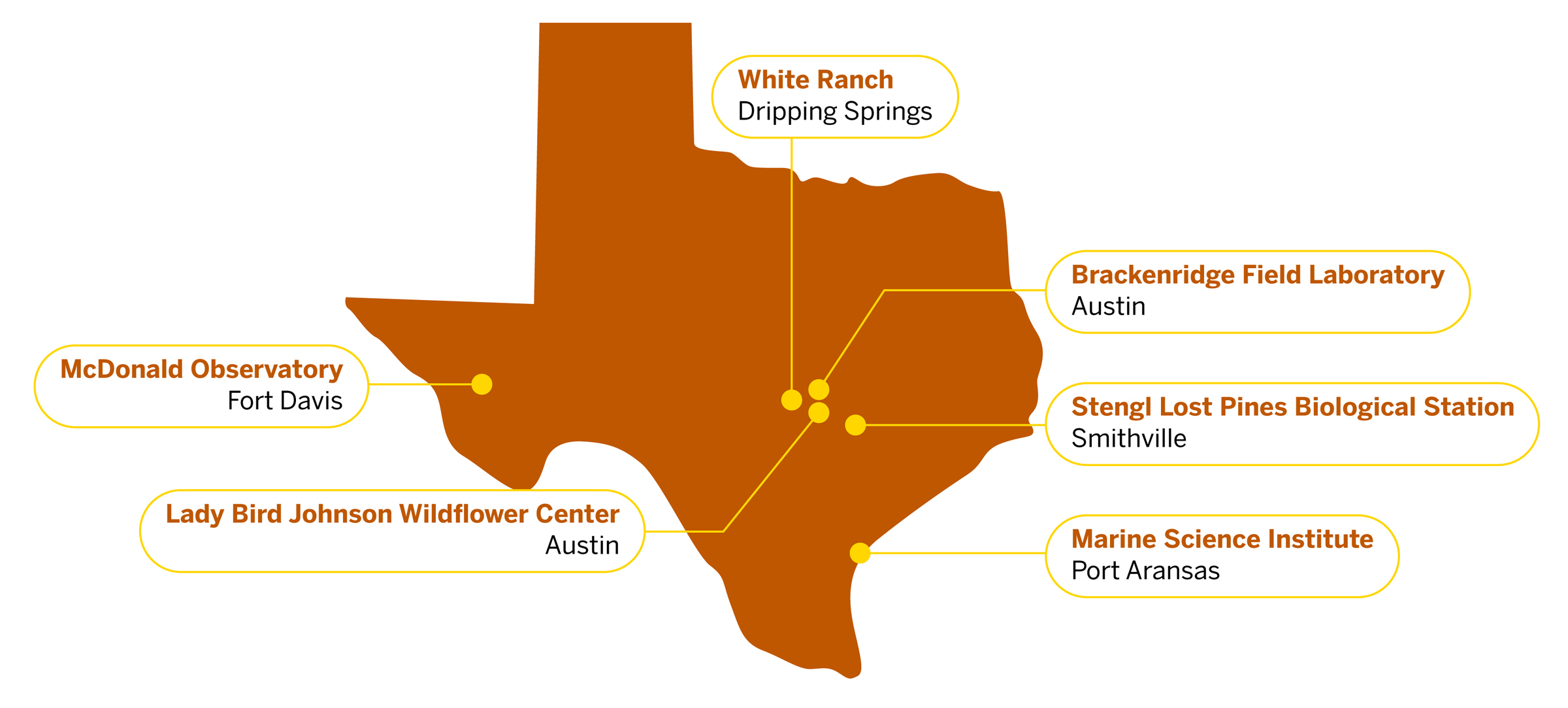Why Field Stations Matter
Field stations are areas where biologists, geoscientists, architectural researchers, engineers and others gain insights about the intricate and interconnected processes that affect land, water, atmosphere, living things, communities and the economy. At our sites, students learn about unique natural places in Texas, communities engage in outreach activities and researchers conduct long-term studies, important for conservation, restoration and understanding the impact of climate-related changes.
UT Austin’s strategic plan outlines a commitment to bold research pursuits and leading the nation in energy and environment-related research, including with a “network of field stations and other sites around the world to capture data, forecast trends and expand biodiversity, environmental and social science research.”
Experts leverage the Texas Field Station Network to monitor environmental changes facing Texas, solve environmental problems, immerse students in educational experiences that will serve them over their lifetimes and connect with the people in local communities where these sites are embedded.
A Robust Network
Six active field stations in our network currently serve researchers. A planned Hill Country Field Station will be built in the coming years, bringing the total number of biological field stations in the network to seven.
Biodiversity Center
Sites within the Texas Field Station Network, along with extensive collections, are available to researchers. These resources are administratively based in the UT Austin Biodiversity Center within the Department of Integrative Biology.

